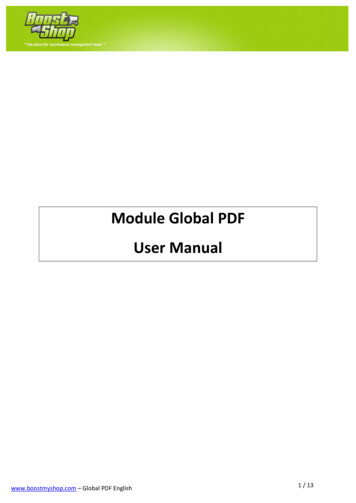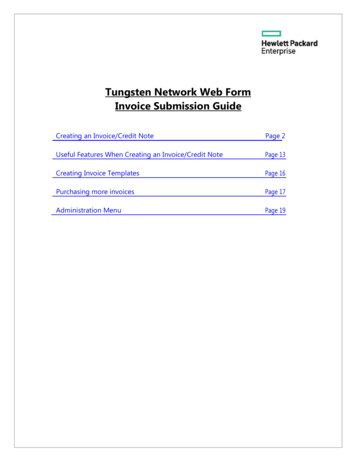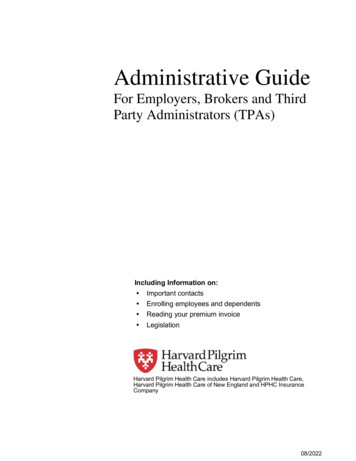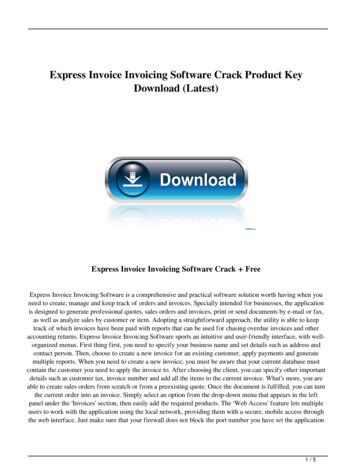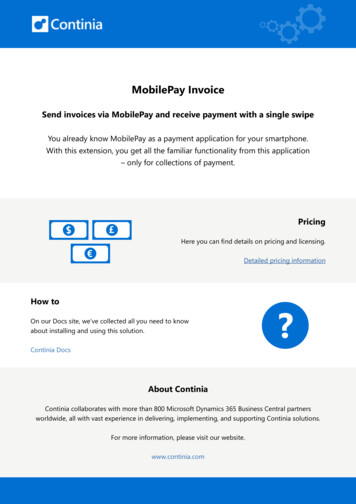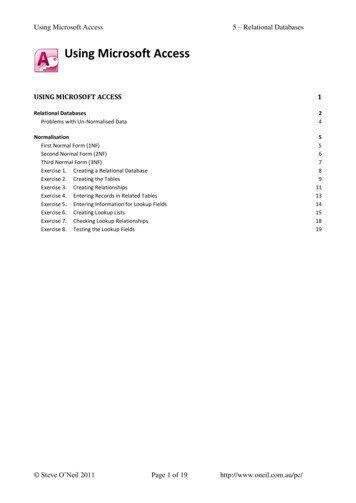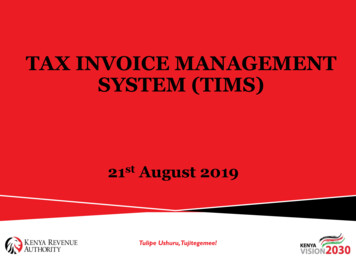
Transcription
TAX INVOICE MANAGEMENTSYSTEM (TIMS)21st August 2019
CORPORATE BACKGROUNDKRA is currently implementing the Seventh Plan (2018/19 – 2020/21) whosefocus is on key priorities of the country’s development agenda as spelt out in: The Kenya Vision 2030 - Long-term Plan The Third Medium Term Plan (MTP 2018-2022)-Government support forreform of Public Sector through digitization of government services The Budget Policy Statement 2019 The Big Four AgendaAlso taken into account are the country’s commitments under the SustainableDevelopment Goals (SDGs) especially: SDG 8 - Decent work and Economicgrowth , SDG 9- Industry, Innovation & Infrastructure, , SDG 10 -ReducedInequalities, SDG 16 - Peace, Justice & Strong Institutions, SDG 17Partnership for the goals.
CORPORATE BACKGROUND.The KRA 7th Corporate Plan is in turn supported by the TransformationAgendaTransformation Vision:“A Tax Authority offering customer focused tax services based on data, risk andintelligence by leveraging technology”.Aiming at efficiency in Service Delivery by using more intelligent processeswhile being customer friendly hence the Transformation Strategy slogan,“Simple at the Front, Smart at the Back”KRA’s transformation objectives are as follows; To be a truly modern tax administration, offering high quality services thatmeet stakeholder expectations. To have a well-equipped, skilled and motivated staff delivering high qualityservices in a modern working environment.
TIMS BACKGROUND Electronic Tax Registers (ETRs) were introduced in 2005 to aidin VAT administration. Initial increase in VAT collection was shortly eroded due toinherent technological shortfalls in the current ETR regime,resulting from tampering of the ETRs and misdeclaration orunder declaration of sales transactions. This resulted in significant loss of revenue over the years, whichdirectly impacted on VAT revenue administration It became imperative for KRA to streamline the ETR sectorthrough the implementation of the Tax Invoice ManagementSystem (TIMS).
VAT at a GlanceINTERNAL
MAIN FEATURES OF TIMSTIMS is an enhancement of the current ETR regime. It aimsat plugging loopholes resulting from weaknesses in this regimethrough: Integration with trader systems, i.e. ETRs, ERPs and Point ofSale systems (POS). Standardization and authentication of tax invoices issuedby VAT traders on a real time basis. Seamless integration with iTax. A module for storage of tax invoice data. Verification of the validity of a tax invoice for use by officers,traders and the general public through the Tax Invoice Checkeron the iTax portal or Mobile app.
TIMS VALUE PROPOSITIONCUSTOMERSVAT TAXPAYERS Foster fair business environment Reduced cost of billing, i.e. printing, postagefees Business modernity & professionalism – digitaleconomy, elimination of human errors Simplified VAT Return filing (Pre-Filled) Non intrusive verification of tax processes Faster processing of refundsGOVERNMENT Foster patriotism – Kulipa Ushuru niKujitegemea Assurance of genuine products in themarket Building of trust between the customer &business entity Environmentally friendly – no paper; savestrees Participate in enhancing Tax Compliance bybusiness entities – via the invoice checkerOUR VALUE Enhanced Revenue Collection Good Governance in the Field of Taxation andPFM (Public Finance Management) Ease of doing business climate (investment hub) Reduction in shadow economy Certainty in tax revenue expected due toimproved ability to forecast Authentic refunds paid Economic analysis& prediction based on livedata KRAReduction of VAT Fiscal FraudTimely Transfer of VAT Fiscal DataEnhancement of Tax ComplianceReduced compliance management costEnhanced efficiency in service deliveryEnhanced revenue collection
OBJECTIVES OF TIMSThe overall objective is to increase VAT Compliance, minimize VATfraud and increase tax revenue. TIMS will achieve this objective by integrating with the differenttrader sales systems in the market i.e. (ETRs, Point of Saleterminals and ERPs) via a Control Unit. Each VAT registered trader will be required to obtain this ControlUnit as an independent or integrated component in order toenable the seamless transmission of invoice data to TIMS.
CONCEPTUAL OVERVIEW OF TIMS
Other features:Buyer PIN (Optional)Description of Supplies-HS Code ClassificationQR CodeInvoice verification-Invoice CheckerControl Unit CheckerReal /Near Real Time TransmissionSecure Channel for Transmission of Invoice DataModule for Supply Chain ManagementNext Steps:-Upgrade of ETR Specifications-Pilot & Roll Out
OTHER OPPORTUNITIES Analytics, management and planning across the country by region,county, etc. Protection of consumer rights. Innovation, creativity and exploitation of emerging global technology. Advancement to global best practice. Extending the benefits of TIMS to other tax heads and revenuesources.
GLOBAL EXPERIENCESNO COUNTRY GROWTH IN REVENUE1RwandaElectronic cash registers were introduced in March 2013. In 2015, VATcollected on sales had increased by 20%.2HungaryElectronic cash registers were installed with a fiscal control unit. After thefirst year of operation, VAT revenue increased by 15% in the concernedsectors.3Belgium4SwedenInitial comparisons shows an 8% increase in restaurant sales reported afterinstallation of their solution as with sales reported before.Increased VAT and income tax revenues has been estimated to aroundEUR 300 million per annum since the legislation was implemented.5CanadaIn Canada as at 31 March 2016, EUR 822 million in taxes was recoveredfollowing the introduction of sales recording modules into the restaurantindustry. Projections are that by 2018-2019, this will cumulatively amountto EUR 1.44 billion.6AustriaResults from the electronic sales suppression tools are expected to be anadditional EUR 900 million in tax revenues.OECD (2013), Electronic Sales Suppression: A threat to tax revenues, OECD Publishing, Paris,Price Waterhouse Coopers (2015), The Sharing Economy (accessed on 1 March 2017)European Commission (2012), Study to quantify and analyze the VAT Gap in the EU 27 MemberStates, Final Report, TAXUD/2012/DE/316
END
through the implementation of the Tax Invoice Management System (TIMS). INTERNAL VAT at a Glance. MAIN FEATURES OF TIMS TIMS is an enhancement of the current ETR regime. It aims at plugging loopholes resulting from weaknesses in this regime through: Integration with trader systems, i.e. ETRs, ERPs and Point of


